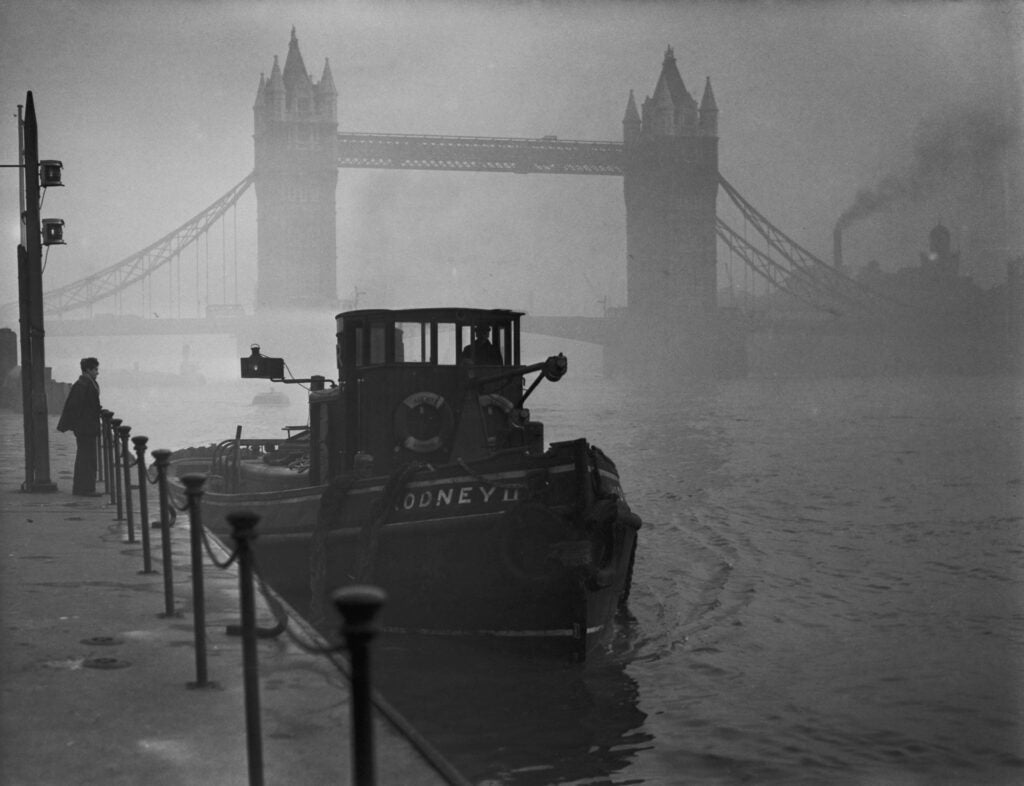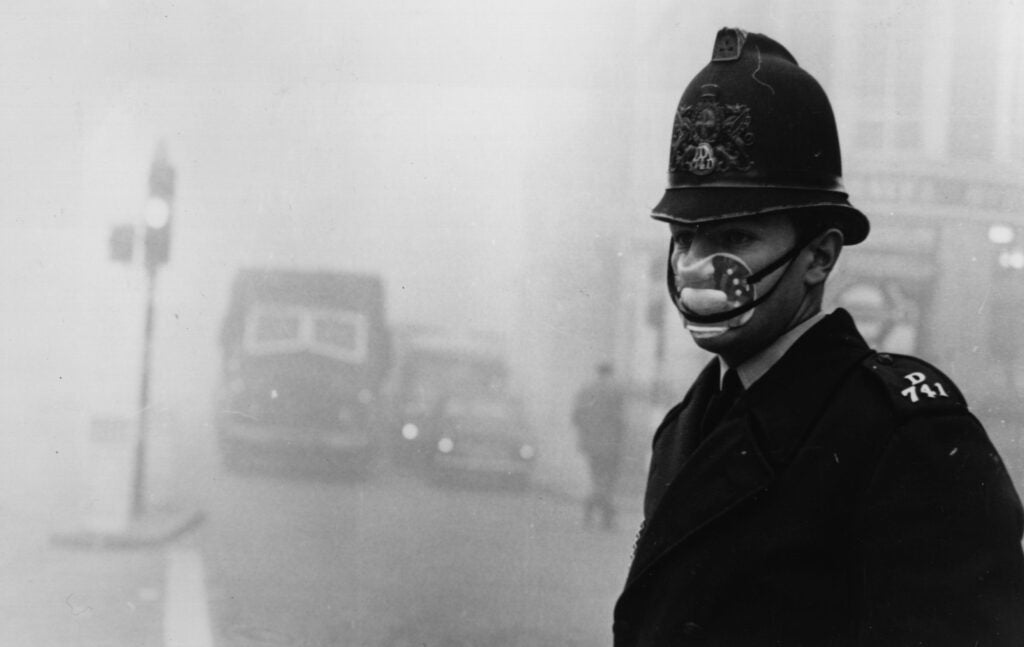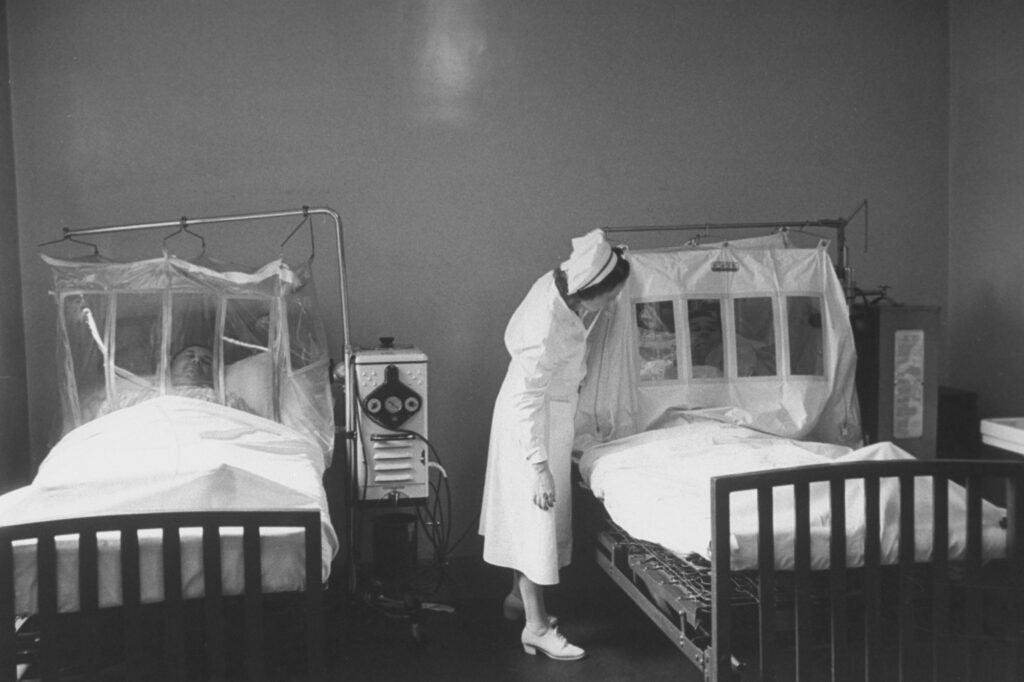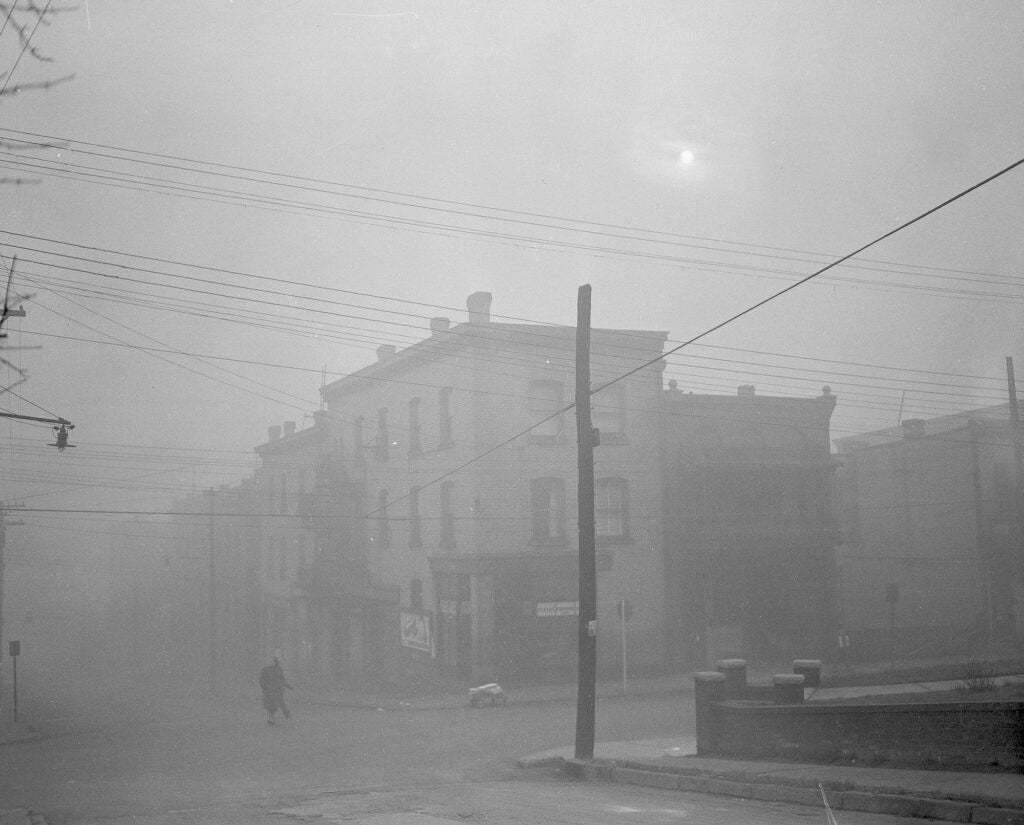That Deadly Fog in ‘The Crown’ Was Real. Here’s the Rest of the Story.
In Netflix’s hit show on the royals, there’s an unbelievable story about air pollution. But the Great Smog of London was all too real — and still relevant today.

This page was published 2 years ago. Find the latest on Earthjustice’s work.
As Netflix’s “The Crown” gains popularity, more people are seeing an early episode involving the Great Smog of 1952. In this real-life crisis, thousands of Londoners died from five days of heavy fog laced with air pollution.
When the fog appears, it is met with British understatement. A weather report over the wireless calls the fog “a real pea soup-er.” Initially, just a few bureaucrats are concerned due to a similar event several years earlier in Donora, Pennsylvania. Guttural coughing strikes an ominous note as characters navigate London streets with torches, some headed to hospitals jammed with gurneys. Mozart’s Requiem in D Minor starts up.

An image from The Crown, Season 1, Episode 4: “Act of God.” (Alex Bailey / Netflix)
The Great Smog of London and the Donora Death Fog built political momentum in the U.S., and the U.K. for taking air pollution seriously. From those events came laws and regulations that form the backbone of Earthjustice’s ongoing legal fights for clean air. And while these legal tools have ended the era of a sudden mass casualty fog hitting a city, the United States still loses thousands of people to air pollution each year.
In the show, government officials explain that an anticyclone is pushing air over the city downward, trapping air pollution from coal burning. The cigar-chomping prime minister, Winston Churchill, mocks their concern, dismissing talk of “isobars and isohumes” in ways evocative of present-day climate deniers.
But there’s political peril for Her Majesty’s government: They were warned about this possibility after a fact-finding mission examined what happened in 1948 when pollution-laced fog killed more than 20 people and sickened a third of residents in the industrial town of Donora.
“The Crown” follows the lives of the British royals, so when the sun finally comes out to flash on Queen Elizabeth’s pearl necklace, the show moves on to a story about her coronation. But if this were an environmental drama, the next episodes would hold an inspirational story.

A tugboat floats amid heavy fog on London’s Thames River in 1952. (Fox Photos via Getty Images)

A London police officer wears a mask for protection against the Great Smog of 1952. (Keystone via Getty Images)
The U.S. and the U.K. each passed nationwide air pollution laws in the 1950s.
In the U.K., the 1956 British Clean Air Act made it illegal for dark smoke to leave the chimney of any building. The rules forced upgrades to home fireplaces and furnaces where residents burned coal. The law also set up new height requirements for industrial smokestacks and smoke density monitoring. Air quality visibly improved.

A U.S. Public Health Service worker measures samples of air pollution in Donora, PA. (Bettmann Archive via Getty Images)
The U.S., meanwhile, passed its first national legislation addressing air pollution in 1955. The Air Pollution Control Act provided funds to research the problem and momentum for new laws that culminated in the Clean Air Act. The landmark 1970 law authorized standards for air quality and robust regulation to meet them. The Environmental Protection Agency (EPA) was created in the same year and tasked with implementing the law.
The following year, a group of pioneering lawyers formed what would become Earthjustice and began taking the government to court when it failed to live up to the new law. Over the subsequent half century, Earthjustice has successfully sued under the law to:
- win tighter controls over soot, mercury, and ozone — changes estimated to save tens of thousands of lives each year;
- hold states accountable when their air pollution crosses state lines;
- affirm the ability to regulate greenhouse gases that cause climate change;
- force authorities to undertake real air cleanup plans from Fairbanks to Southern California.

Two workers rest in an oxygen tent in Donora, PA, in 1948. (Alfred Eisenstaedt / LIFE Picture Collection via Getty Images)
Americans have largely forgotten the Donora Death Fog and the Great Smog of London — two shocking events still in living memory for Queen Elizabeth’s generation — because of Clean Air Act enforcement. Reducing just one of the pollutants targeted by the Clean Air Act added 1.6 years to the average American’s life. Amendments to the Act in 1990 were estimated to have prevented up to 370,000 premature deaths annually by 2020 and have reaped benefits 32 times greater than the costs.

Low-hanging pollution nearly blocks out the sun in Donora, PA, on Oct. 30, 1948. (Walter Stein / AP)
The Clean Air Act is a crowning achievement. But we cannot abdicate our responsibility to keep making progress. Air pollution worsened under the Trump administration and its assaults on clean air protections. And air pollution still leads to nearly a quarter million premature deaths annually in the U.S.
Please take a moment to tell the White House to move forward on overdue clean air regulations. Our courtroom victories are made stronger when the people demand strong protections.